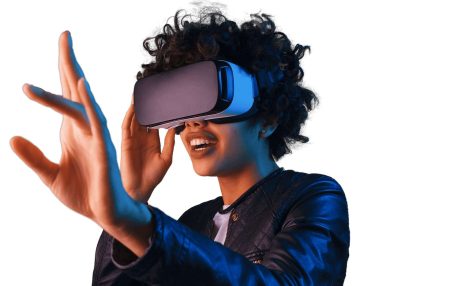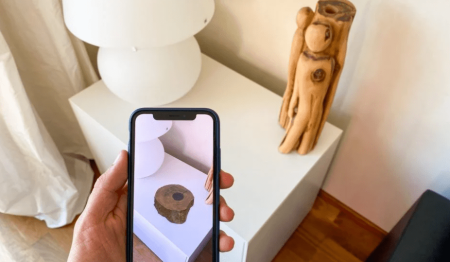Virtual reality, augmented reality, extended reality: what are the differences?
Since the 1990s, a new technology has appeared: augmented reality and virtual reality. Both have the principle of immersing the user in an immersive experience. However, there are many differences between them, making them two concepts that should not be confused.
Filter Maker, therefore, gives you the key elements to understand these distinctions.
Augmented reality and virtual reality: their specificities that make them different

Virtual reality: immersion in another world
By definition, virtual reality, also known as VR, places the user in another place entirely. In other words, this system will completely obscure the environment in which the user is located thanks to a headset designed for virtual reality. As a result, the user is completely immersed in digital content and is therefore cut off from the real world.
To be able to benefit from this immersion, many manufacturers on the market offer adapted tools: the headset for PC, the so-called "autonomous" headset, and the "all-in-one" headset for smartphone.
Augmented reality: the superimposition of digital elements
Augmented reality refers to the superimposition of digital content on the real world, such as virtual objects or information.
This is because the place in which the user is standing is covered by a layer of digital content, so that the elements can be adapted to your environment. However, unlike virtual reality, the user is not isolated from their environment and does not interact with the real world.

To use augmented reality, all you need is a simple screen and a specific application with augmented reality capabilities.
The possibilities of augmented reality for AR applications are almost infinite and can be applied to many everyday uses that can change users' lives. Recently, IKEA, decided to use this technology by offering its customers the possibility to view its products at home through its application. This is an opportunity for its consumers to discover a 3D model of one of the brand's products in their home.
Augmented reality can also be used on social networks, through instagram filters including 3D elements and personified according to your desires. This is what we offer at Filtermaker. If you are interested, we invite you to contact one of our experts..
Contact
The AR and VR market in the coming years
Concepts that promote innovation and investment
As far as the business that emerges from this technology is concerned, it must be said that the market is more than promising. Both in terms of innovation and investment.
More and more projects, start-ups and manufacturers are looking for products related to virtual reality. Among them, we find the giants of the sector such as Facebook, Google, Windows who are working on prototype headsets (Oculus for Facebook, Daydream for Google...).
On the other hand, it is the emerging start-ups in the sector that are increasingly attracting investors.
A constantly growing market
Many studies also show that augmented reality and virtual reality are being adopted by many retailers and are growing areas in the market.
In a few figures, according to Lumus Visothe virtual and augmented reality market could reach over $108 trillion ($83 trillion for AR and $25 trillion for VR) by 2021, growing at a CAGR of 581TP3". This difference can be explained by the fact that augmented reality is more easily accessible via the smartphone, and will therefore be able to reach a greater number of users.
There is no doubt that VR and AR technologies will grow exponentially in the coming years.

As you can see, the difference between the two technologies is quite small but identifiable thanks to their specific characteristics.
Augmented reality therefore displays information in the user's field of vision, thanks to applications using the smartphone's camera.
In contrast, virtual reality immerses the user in another world, as the field of vision is completely covered and the screens in the headset take on the task of representing an environment.
But what about extended reality?
Extended reality: a set of technologies
What is extended reality?
Extended reality, also known as XR, is a general term for all augmented reality and virtual reality technologies. Often used in video games and mobile applications, XR provides an entertainment function for the user.
What does extended reality look like in the future?
Today, extended reality is appealing to a wide range of sectors, including education, vocational training, medicine and industry. By offering the possibility of being totally immersed in an immersive experience, extended reality is also attracting the interest of brands, who see real potential for marketing strategy.
Taking a slightly more futuristic view, a combination of artificial intelligence and the XR would give access to important information through the continuous collection of data that will improve workers' decisions.
With the arrival of 5G, extended reality technologies could make it possible for surgeons, artists and maintenance technicians to work remotely.